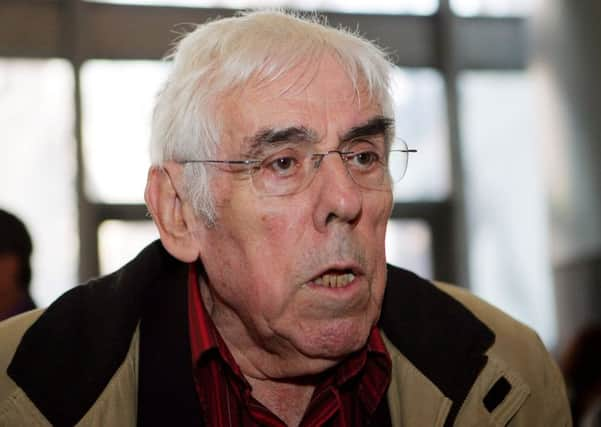Obituary: Raoul Coutard, leading cinematographer of the French New Wave


Raoul Coutard, whose innovative camera work for Jean-Luc Godard and François Truffaut made him the leading cinematographer of the French New Wave, died on Tuesday in Labenne, near Bayonne, France.
Coutard, a former photojournalist in French Indochina, had never operated a movie camera when he was asked to “do some photos” for The Devil’s Pass, an adventure film being made in Afghanistan in 1958.
Advertisement
Hide AdAdvertisement
Hide Ad“I agreed, but if I had known that the job was actually director of photography and that the film was to be in Cinemascope, I would never have said yes,” he said in 2001.
After the film was nominated for the top prize at the Berlin Film Festival, its producer, Georges de Beauregard, hired Coutard as a cinematographer for his next project, Breathless, Godard’s directorial debut. It proved to be a turning point in French cinema.
Shot in documentary style, in natural light, with a hand-held camera, Breathless overthrew the polished aesthetics of 1950s French film, introducing a B-movie energy.
“We tried to make it like we were a news crew,” Coutard said in 2010. “I handled the camera and the lighting, and I had one assistant who was the focus puller. There was no gaffer for the light, and just one grip who was moving around equipment.”
The film electrified audiences and critics, and made stars of Jean Seberg and Jean-Paul Belmondo.
Sometimes described as “the eye” of the New Wave, Coutard went on to make more than a dozen films with Godard, including Contempt and Weekend, and four films with Truffaut, notably Jules and Jim and The Bride Wore Black.
He became known for his mobile camera and long tracking shots. Using the latest film stocks, he achieved a lustrous chiaroscuro in his black-and-white films, and dazzling, saturated hues in his colour films. Armond White, surveying his career in Film Comment in 1989, called him “the first superstar cinematographer”.
Raoul Coutard was born on September 16, 1924, in Paris, where his father was an accountant for Hoffmann-LaRoche, the pharmaceutical company. He passed the entrance exam to study chemistry, but, lacking the tuition money, he went to work at a photo lab.
Advertisement
Hide AdAdvertisement
Hide AdIn 1945 he enlisted in the French Far East Expeditionary Corps and served in Indochina, rising to platoon sergeant in Laos. After completing a tour of duty, he returned to do war photography for the French Military Information Service. At the same time, he accompanied ethnographic expeditions, recording village life and customs and photographing the landscape. He later worked from Indochina as a freelance photographer, contributing to the magazines Radar, Paris Match and Life.
In Hanoi he befriended Pierre Schoendoerffer, another photographer, and the two made a pact, which Coutard described in a 1997 memoir, L’Imperiale Du Van: How I Broke Into the Movies While Eating a Bowl of Chinese Soup. The first one to make a film would bring the other along.
In 1958, Schoendoerffer found himself directing The Devil’s Pass with Jacques Dupont and, true to his word, invited Coutard aboard.
The two went on to make many films together, notably The 317th Platoon (1964) and Drummer Crab (1977). The latter, a Conradian tale of the high seas, showed Coutard at his most ravishing. “Coutard turns the sea into molten silver, the setting sun into spreading red fire, Vietnam into terrain hot with dangerous and hidden life,” the Miami Herald wrote in 1984.
Vincent Canby of the New York Times wrote: “Although it’s extremely difficult for laymen to know exactly who is responsible for the ‘look’ of any particular film, it should be possible at this point to acknowledge Coutard’s genius; that is, his rare ability to realise the very different objectives of each of the major directors he has worked with.”
His collaboration with Godard ended when France was engulfed by the political events of 1968. “Jean-Luc is a fascist of the left, and I am a fascist of the right,” Coutard told the Guardian. But the two reunited in the early 1980s to make Passion and First Name: Carmen. He also had a falling-out with Truffaut, with whom he had collaborated on Shoot the Piano Player and The Soft Skin.
The Bride Wore Black (1967) was their last film together. “I had the ridiculous idea to quit smoking at the same time we were filming the movie,” Coutard said. “I was very unbearable and very unpleasant, so we parted ways after that.”
Coutard was the cinematographer on Jacques Demy’s Lola, which made a star of Anouk Aimée, and on two of the best-known films by Costa-Gavras, Z and The Confession. He also contributed to Chronicle of a Summer, a 1960 film directed by the cinéma-vérité pioneer Jean Rouch with the sociologist Edgar Morin.
Advertisement
Hide AdAdvertisement
Hide AdAs the New Wave ebbed, he began making his own films. Hoa-Binh (Peace), which dramatised the effects of war on the children of Vietnam, won the prestigious Prix Jean Vigo and in 1971 was nominated for an Academy Award as best foreign-language film.
Coutard followed up with Operation Leopard, about a 1978 military raid by French forces in Zaire, and SAS in San Salvador, a political thriller.
Coutard, who lived in Boucau, near Bayonne, is survived by his wife, Monique Herran.
He worked as a cinematographer on more than 80 films, most recently Philippe Garrel’s Wild Innocence, released in 2001, but his collaborations with the directors of the New Wave remain his legacy.
It was a time he recalled with fondness and a touch of amusement.
“At the beginning of the New Wave, they thought they could do anything because they had no idea what cinema was,” he told the journal Post Script in 2010. “That’s what made it dramatic, that they didn’t think there were limits to what you could do. I put together a system to make it easy to work.”
Copyright New York Times 2016. Distributed by NYT Syndication Services